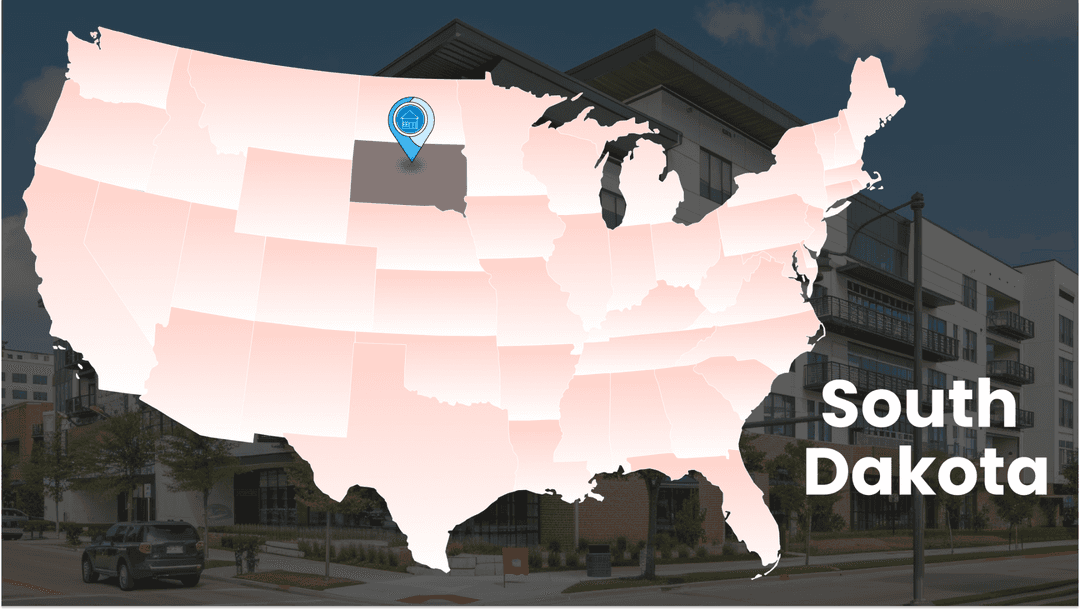Blogs| South Dakota Low-Income Housing Tax Credit (LIHTC) Program
Written by

Priya Gupta
Published
Dec 20, 2024
Topics
State LIHTC

The Low-Income Housing Tax Credit Program, administered by the South Dakota Housing Development Authority (SDHDA), is one of the cornerstones of addressing South Dakota’s affordable housing crisis.
Established in 1986, this federal program encourages private developers to construct or rehabilitate affordable housing properties, ensuring long-term affordability for low-income households, seniors, and persons with disabilities.
LIHTC is a program, hence a valid financial proposal, that fills a significant part of the critical needs of housing communities like Sioux Falls, Rapid City, and beyond by offering a dollar-for-dollar reduction in federal tax liability for 10 years.

Developers are eligible under strict LIHTC eligibility requirements for South Dakota, both in terms of affordability and obligation to satisfy the low-income housing gap in Sioux Falls and other cities of the state.
Developers need to select one of the following:
A relatively new option allows up to 80% of AMGI for certain units, provided the overall property meets affordability thresholds. Flexibility helps further open opportunities for income-based apartments in Sioux Falls, SD, and affordable housing in Rapid City, SD.
Gross rents, including utilities, cannot exceed 30% of tenant income to ensure that low-income housing in South Dakota is affordable for low-income residents.
Properties must meet the LIHTC requirements for 30 years—15 years for the first compliance period, and a further 15-year extended use period ensures long-term affordability for communities such as those seeking low-income apartments in Sioux Falls, SD.
In addition to tax benefits, the LIHTC program serves as a sound mechanism to measure the serious shortage of affordable housing in South Dakota. Since 1986, it has energized gigantic efforts to provide solutions to housing disparities for low-income families, elderly people, and the disabled while furthering the state’s economic strength.
Besides financing, the LIHTC program also defines long-term affordability. Income and rent restrictions have to stay active for at least 30 years. Such a commitment is especially needed in cities like Sioux Falls and Rapid City, where income-based apartments and affordable housing options are in high demand.
The program encourages low-income apartment development in Sioux Falls and fills most of the urgent gaps in the housing supply because of income-based housing programs. The affordable housing developed in Rapid City, SD, brings economic and social stability throughout the urban and rural areas.
Even though the program appears successful, South Dakota is still far behind in affordable housing. A higher number increase in LIHTC appropriations is part of the assumptions of the Affordable Housing Credit Improvement Act and could finance up to 2,400 more affordable homes for the state.
The South Dakota Housing Development Authority oversees an application process by which developers compete for access to the Low-Income Housing Tax Credit Program. The projects’ affordability requirements are ensured to be met within cities like Sioux Falls and Rapid City, thus filling the demand for low-income housing on which South Dakota citizens rely.
Applications must be submitted before the last business day of August every year. The proposals are evaluated according to SDHDA’s Qualified Allocation Plan (QAP). It does acute housing needs-based projects.
After accepting the project proposal, LIHTC compliance monitoring ensures long-term maintenance of the program and compliance with regulations. The developer is responsible for:
But beyond relief from housing shortages, the LIHTC program is really an instrumental tool for more profound and self-sustaining stabilization of South Dakota’s economy through job creation, income generation, and revenue infusion through local taxes.
Income Based Apartments in Rapid City SD
Get the Latest in LIHTC Right Here!.

The Low-Income Housing Tax Credit program has dramatically transformed a number of cities in South Dakota, which today offer low-cost housing to low-income residents.
Initiatives related to LIHTC among major cities are summarized below.
Sioux Falls stands as the largest city in South Dakota, where several LIHTC projects have enhanced income-based apartments and low-income housing stock. The projects helped provide essential housing for families and individuals while supporting the economic growth and stabilization of the city.
The affordable housing projects in Rapid City now include a shared community space and playgrounds within the 41 new apartments, like Springs Edge. Affordable housing programs keep up with the needs of low-income residents and boost community development.
The Copper Flats project in Mitchell is a 35-unit apartment complex being constructed in collaboration with Mitchell Area Housing Inc. This will provide good-quality housing to low-income families and contribute positively to the city’s affordable housing landscape.
LIHTC is the program that Brookings has applied to provide affordable housing options for low-income families and individuals. These projects have enhanced the city’s efforts to offer accessible housing solutions.
LIHTC developments have been featured in Aberdeen. These LIHTC developments are among the major ways of enhancing the number of housing for low-income producers. Such productions have been crucial to supplement the housing deficit for the low-income tenants in the town.
Huron has benefited from LIHTC-funded projects that provide affordable housing options for low-income families. Such production has been crucial in combating the housing problems in the community.
Water Town LIHTC program offers much-needed affordable housing to low-income citizens. Such movements have been aptly believed to make city housing more affordable.
LIHTC projects offered in several South Dakota cities have played a crucial role in meeting the affordable housing needs of low-income communities and ensuring the community development of South Dakota states. Such projects also support the economy.